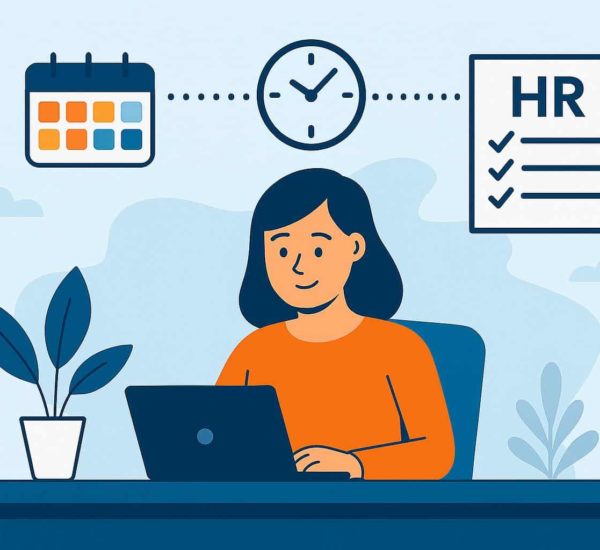According to Glassdoor, the average company in the United States spends about $4,000 to hire a new employee, taking up to 52 days to fill a position.
With such intensive effort and resources needed, it is clear why Human Resources Outsourcing has become a rapidly growing process in the BPO market. It is estimated that at least 50% of larger organizations outsource some of their services, according to Forbes. This strategy is now being followed by small and medium-sized organizations.
Two main models of outsourcing are PEO, professional employer organization, and ASO, administrative services organization. In this article, we will cover the meaning of PEO and the services they provide. Additionally, you will learn about the benefits and drawbacks of working with a PEO. Moreover, we will also debunk some myths that you may have about PEOs.
Let’s begin with defining a professional employer organization.
What is a PEO Company?
PEO stands for professional employer organization. A PEO organization is an outsourcing firm that helps an employer with HR services which they’re unable to provide on their own. Their services include payroll, employee development, employment law compliance assistance, tax management, benefits, HR policies, and claims.
PEOs are highly cost-effective. This is because, with a PEO, you can set up an entirely different team in another country, without the need for its physical presence. Professional employer organizations usually benefit small and medium-sized businesses and mostly work on a short-term contract basis. For tax and insurance-related matters, the PEO is also considered as the ‘Employer of Record’.
A PEO works on the principle of the co-employment model. Which is, they hire staff on your behalf and manage them. PEOs do this using a shared tax ID with their client company.
The Co-Employment Model
A co-employment model is a contract-based agreement between a professional employer organization and the client company. This contract divides the responsibilities of the client company between the two. Another name for this contract is client-service agreement CSA. In the co-employment model, the employer remains in charge of all functions at the organization.
These include decisions of the company, its operations, and the daily duties of employees. The job of a PEO is to supply services and assistance to the organization. It doesn’t provide its client company with a workforce. The benefits and services of a PEO model are discussed in the later sections.
What Services do PEOs Provide?
If you’re a small organization looking to expand your business then professional employer organizations may just be the right thing for you. According to the NAPEO, small businesses that work with PEOs are shown to grow by 7-9% more than companies that don’t. According to the same source, organizations that take help from PEOs are less likely to go out of business.
What does a PEO offer?
A PEO offers the following services that help your business run smoothly:
- HR management
- Payroll management
- Retirement plans
- Safety programs
- Training programs
- Development and strategy
- Tax administration
- Benefits administration
- Employee recruitment
- Resolves your disputes
- Drug testing
What does a PEO not do?
The purpose of adding this section is to clear some misconceptions about professional employer organizations:
Loss of Control over Business
A major misconception that persists about working with PEOs is that employers think they will lose control over their business. Which is not true. Their job is to assist and advise you in your day-to-day Human Resource issues. The control of the company remains with the original owners. PEOs do not have any controlling stake in the firms they work with, to begin with.
Hiring and Firing your Employees
Another myth that persists about a PEO is that they will hire and fire employees as they deem fit. The decision of hiring or firing an employee remains yours. The only job of a PEO is to assist you in the hiring process. This includes writing job descriptions, reviewing their applications, and training them.
Effect on Existing Staff
Working with a professional employer organization will not harm your existing employees. Instead, a PEO can be valuable for your employees in areas where they need the expertise of specialists or advice.

ASO vs PEO
A professional employer organization lessens the burdens of employers by taking care of their day-to-day duties. ASO stands for administrative services organization. They both work in the same way i.e by providing outsourced HR services. Both models are cost-effective and which model you should opt for depends on you.
Some key differences between the two are as follows:
- In PEO, co-employment exists, while it does not exist in ASO.
- In the PEO model, an employee’s compensation is decided by the PEO itself. While in ASO, it is covered by the client.
- In PEOs, the organization is liable for payroll tax. However, in ASO, the employer is liable.
- In PEO, the state unemployment tax rate (SUTA rate) of the PEO is used. While in ASO, the client’s SUTA rate is used.
A PEO may be opted by companies who want to outsource most of their HR tasks. If you want to retain your internal HR staff, the ASO model can be a better option.
PEO vs HRO
There is a minor difference between a professional employer organization and a human resource outsourcer. A PEO is fully responsible for all your HR matters. They can hire the right employees, train them, and manage their payroll. On the other hand, a human resource outsourcing firm doesn’t directly employ people.
Benefits of Working With a PEO
Imagine this, instead of burdening your employees with tons of tasks, you have another helping hand to keep things running smoothly. While your employees are looking after other important tasks, they are completely unburdened by tasks you outsourced to a PEO. This is what you get from working with a professional employer organization.
Not just this, some benefits are given below:
Time-Effective
Having another helping hand to help you with your administrative goals saves a lot of time. Not only this, having a PEO by your side is cost-effective for your organization.
Health Insurance
Apart from strictly HR services, a PEO can deliver the following services:
- Health care coverage
- Life insurance
- Disability insurance
- Educational assistance
Since PEOs negotiate for these benefits, they can even reduce charges for you.
Workers’ Compensation
Working with a professional employer organization can help you get workers’ comp insurance coverage. Additionally, they help resolve injured employee claims.
Work Done by Experienced Professionals
When you work with a PEO, experienced professionals do your work. Your organization will thrive when you and your employees don’t have to worry about time-consuming tasks like payroll management. Secondly, your employees will work in a stress-free environment, and that’s how productivity kicks in.
Bring Expertise to Work
Most employees at a small organization aren’t as professional when it comes to dealing with HR issues. However, when you trust a PEO with your work, you can be worry-free because workers in PEOs are experts in HR matters.
Stay in Control
One benefit of a professional employee organization is that they don’t take control over your business. While they assist you in most HR matters, the final decision of everything is always in your hands. In this way, you have complete control over your company while taking help from a PEO at the same time.
Reduced Payroll Headache
With a PEO working with you, forget the hassle of having to manage payrolls on your own. Not just this, a PEO provides professional assistance for you in many other complex and time-consuming matters. Some examples of this include, payroll processing, tax administration, and paycheck deliveries.
Freedom to Focus on Growth
One benefit of working with a professional employer organization is that you get more freedom to do away with day-to-day transactional tasks and focus on high-priority growth-oriented tasks. This allows you more time to think of ways in which your organization can grow.

Drawbacks of Working With a PEO
While PEOs have many benefits for your organization, there are certain drawbacks too:
Lack of Warmth
Since PEOs is a third-party organization, you and your employees will not feel the warmth and joy working with them as you do with in-house employees.
Some Loss of Control
Although a PEO can never take full control over your organization, sharing many services will allow them at least some control over you. You may feel a lack of control over a few processes and employees since they don’t directly report to you.
Change in Culture
A professional employer organization is an outside organization. When you work with them, your company culture is bound to change a little. In other words, the influence of an outside organization is likely to affect your own culture.
Provider Switching
When working with professional employer organizations, you may need to deal with many different providers. It may get frustrating having to deal with a different service provider every time.
Expensive
Sometimes a PEO can be expensive for a small-sized business because they charge at least 2% to 12% of the total wages of employees employed by them.
Loss of Exclusivity
Having an outside organization work with you means they are directly involved with you. In this case, you may lose exclusivity when it comes to your organization. Some processes will lack the personal attention they need.
Before Selecting a PEO
If you decide to work with a professional employer organization at some point in your career, keep in mind the following points:
Check-in With the Finance
- Make sure the PEO’s financial statements are strong.
- Make sure their financial, ethical, and operational practices are accredited by organizations like the ESAC.
- Although a PEOs fee will be decided by the number of employees you have, still be sure to go through their fee structure before you decide one.
- Before you decide on a PEO, it’s suggested to meet them. Some PEOs charge an extra fee to talk with a live representative. Whatever happens, make sure you select a PEO that is dedicated to fulfilling their commitments.
Ensure Certification
- Make sure they’re a certified professional employer organization. A CPEO is likely to benefit you more in areas such as tax regulation as compared to non-certified PEOs.
Check-in With the Technology They Offer
- When you partner with a PEO, make sure they provide you with updated technology such as the human resource information system HRIS. However, finding a PEO with rich features might be slightly harder for small businesses as compared to larger organizations.
Client Referrals
- Another better way to decide a PEO is to enquire about them from clients who they’ve served before.
- Keep in mind their supporting team ratio compared to your team.
Cost of a PEO
The PEO expense is based on various factors like how many employees are there in your organization and what services of the professional employer organization you seek. However, the charges of a professional employer organization are based on two factors of your organization:
- The percentage of payroll model
- The per employee, per month model (PEPM)
Under the first model, a PEO is likely to charge you the percentage of the amount of payroll in your organization. This is inclusive of taxes and is likely to cost you from about 2% to 12% of the wages. This fee is in addition to the normal employee overhead costs, such as the employer’s share of FICA This service fee is also known as the administration fee.
Under the PEPM model, the PEO decides its cost based on per employee, per month basis. This is likely to range from $40 to $160 per month.
PEO companies
A few accredited professional employer organizations are given below.
Oasis offers you:
- Services to attract and retain employees
- Support for your business
- Offer benefits
- Mitigate risk
- Manage HR payroll and other services
Engage PEO offers you:
- Services for HR management
- Payroll and tax administration
- Employee benefits
- Training for employees
- Workers’ comp
- Cloud-based technology solutions
National PEO offers you:
- HR outsourcing services
- Reduced overhead costs
- Development of better skills in your employees
- Help in running your business smoothly
- Services for recruiting
- E-verification
GenesisHR PEO offers you:
- Training and development
- Performance management
- Risk management
- International partnerships
- Benefits administration
- HR policies
When Do You Need a PEO?
Is having a PEO a good idea for your organization? Only you can answer that. To check if you need external help, peek inside your company. Having a PEO might be a good idea if your team is overworked and exhausted. If you feel your employees could use an extra hand with their tasks and take some burden off their shoulders, you should consider a PEO.
The Key Takeaway
At the end of the day, it is up to you to decide if you need assistance from a professional employer organization. Before you decide on a PEO, make sure to verify certain things about them given in this article. Carefully reading all the benefits and drawbacks of having a PEO is important. Otherwise, you may put your organization at risk.






